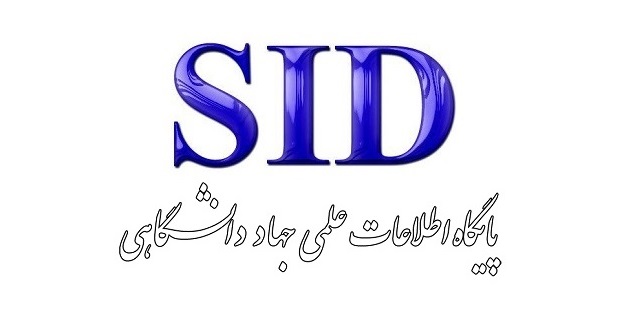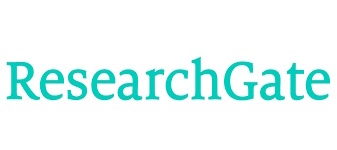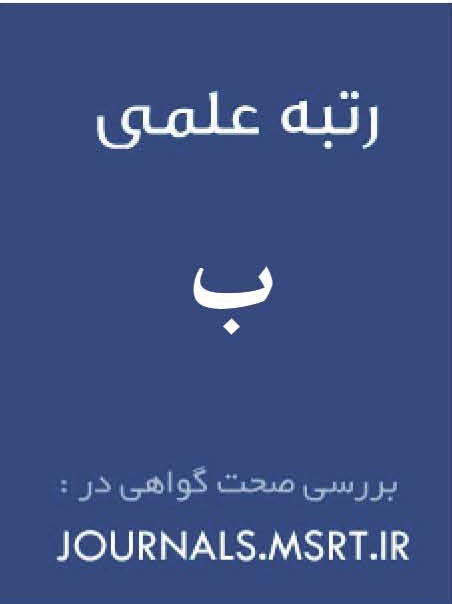اثر تعدیل کننده الزامات مالی و سواد مالی بر رابطه بین فناوری مالی و پولشویی
کلمات کلیدی:
الزامات مالی , سواد مالی, فنآوری مالی, پولشوییچکیده
هدف این پژوهش، واکاوی تأثیر فناوری مالی بر بروز پدیده پولشویی با تأکید بر نقش تعدیلگر الزامات مالی و سواد مالی است. با توجه به رشد چشمگیر ابزارها و پلتفرمهای فینتک، ضرورت دارد اثرات آنها بر مخاطرات مالی، بهویژه در حوزه جرایم اقتصادی، مورد تحلیل قرار گیرد. در این میان، ظهور فناوری مالی با ارائه راهحلهای نوینی مانند پرداختهای دیجیتال، ارزهای رمزنگاریشده و پلتفرمهای غیرمتمرکز، اگرچه تحولات مثبتی در دسترسی به خدمات مالی ایجاد کردهاست اما بهدلیل ویژگیهایی مانند ناشناسبودن، سرعت بالا و حذف واسطهها، به ابزاری جذاب برای مجرمان مالی تبدیل شده و خطرات جدیدی را در فرایند پولشویی بهوجود آوردهاست.هدف از پژوهش حاضر، اثر تعدیل کننده الزامات مالی و سواد مالی بر رابطه بین فناوری مالی و پولشویی بود. این پژوهش بر اساس دسته بندی تحقیقات از نظر هدف یک پژوهش کاربردی محسوب میشود و از نظر روش گردآوری دادهها پیمایشی است. جامعه آماری تحقیق مدیران مالی و کارمندان موسسات زیر مجموعه انجمن حسابداران خبره در تهران میباشند. حجم نمونه با توجه به جدول مورگان برابر 384 نفر مشخص شد. روش نمونه گیری نیز به صورت تصادفی بود. روایی و پایایی پرسشنامه تایید شد و دادهها با استفاده از نرم افزار PLS3 تحلیل شدند. نتیجهگیری نشان میدهد که فناوری مالی بهطور مستقیم بر پدیده پولشویی تأثیرگذار است و این تأثیر میتواند در صورت وجود الزامات مالی مؤثر و سواد مالی بالا، کاهش یابد. یافتهها حاکی از آن است که وجود قوانین مالی روشن و آگاهی مالی در میان کاربران، نقش مهمی در کنترل سوءاستفاده از فناوریهای نوین مالی برای پولشویی دارد. همچنین، تعامل بین متغیرهای پژوهش نشان میدهد که نقش تنظیمگری و آموزش مالی در تقویت شفافیت مالی بسیار کلیدی است. در مجموع، ترکیب فناوری مالی با نهادهای نظارتی کارآمد و آموزش مالی میتواند به کاهش ریسکهای مرتبط با جرایم مالی منجر شود.
دانلودها
مراجع
AlQudah, A., Hailat, M., & Setabouha, D. (2025). Money Laundering in Global Economies: How Economic Openness and Governance Affect Money Laundering in the EU, G20, BRICS, and CIVETS. Journal of Risk and Financial Management, 18(6), 319. https://doi.org/10.3390/jrfm18060319
Andni, R. (2025). The Impact of Money Laundering on Global Economic Stability and International Business: A Multidimensional Analysis. Journal of Business Crime, 1(1), 1-10. https://doi.org/10.70764/gdpu-jbc.2025.1(1)-01
Bk, M., & Ramasubramanian, V. H. (2025). Anti-money laundering system in detecting and preventing money laundering activities: a systematic review. Journal of Money Laundering Control, 28(2), 385-407. https://doi.org/10.1108/JMLC-07-2024-0108
Boyko, A., Zimbroff, A., Mynenko, S., & Chen, Y. (2024). Anti-money laundering in the digital economy: Institutional, financial, and educational channels. Virtual Economics, 7(3), 59-80. https://doi.org/10.34021/ve.2024.07.03(4)
Ciantar, L. (2024). Empowering young people against financial crime: education about anti-money laundering and combating the financing of terrorism in business subjects
Ifrani, I. (2019). Assessing money laundering in the digital era: The high potential of cyber laundering on the revolution of financial technology.
Irwin, S. M., Slay, J., Raymond Choo, K. K., & Lui, L. (2014). Money laundering and terrorism financing in virtual environments: a feasibility study. Journal of Money Laundering Control, 17(1), 50-75. https://doi.org/10.1108/JMLC-06-2013-0019
Ismail, S., Abdou, R. M., & Ibrahim, M. S. (2025). Who is Better in Practicing Customer Due Diligence as an Anti-Money Laundering Tool for Financial Institutions: Can Internal Auditors Be Forensic Accountants? Evidence from MENA Region. In Sustainable Data Management: Navigating Big Data, Communication Technology, and Business Digital Leadership. Volume 1 (pp. 11-23). https://doi.org/10.1007/978-3-031-83911-5_2
Jayasekara, S. D. (2021). Deficient regimes of anti-money laundering and countering the financing of terrorism: agenda of digital banking and financial inclusion. Journal of Money Laundering Control, 24(1), 150-162. https://doi.org/10.1108/JMLC-04-2020-0035
Jimu, T., & Chimwai, L. (2025). Using the Technology Acceptance Model in Assessing the Impact of Financial Intelligence Systems on Money Laundering Detection in Zimbabwean Financial Institutions. Kuveza neKuumba: The Zimbabwe Ezekiel Guti University Journal of Design, Innovative Thinking and Practice, 158-186. https://doi.org/10.71458/w1zwfb84
Kalibri, F. (2022). The Impact of Electronic Banking on Financial Transparency, Resource Allocation, and Combating Money Laundering and Banking Crimes. https://civilica.com/doc/1738016
Khan, A., Jillani, M. A. H. S., Ullah, M., & Khan, M. (2025). Regulatory strategies for combatting money laundering in the era of digital trade. Journal of Money Laundering Control, 28(2), 408-423. https://doi.org/10.1108/JMLC-07-2024-0113
Le Nguyen, C. (2018). Preventing the use of financial institutions for money laundering and the implications for financial privacy. Journal of Money Laundering Control, 21(1), 47-58. https://doi.org/10.1108/JMLC-01-2017-0004
Liu, J. (2025). The Roles of Technology in Anti-Money Laundering. Science Insights, 46(4), 1813-1819. https://doi.org/10.15354/si.25.re1175
Mashhadizadeh, R., Rahnamaye Roodposhti, F., Ahmadi, F., & Mohammadi Pour, R. (2024). Prioritization of Financial Resilience Factors in FinTech Businesses Using Fuzzy ANP Approach. Journal of Financial Management Studies, 17(62), 21-38.
Meiryani, M., Soepriyanto, G., & Audrelia, J. (2023). Effectiveness of regulatory technology implementation in Indonesian banking sector to prevent money laundering and terrorist financing. Journal of Money Laundering Control, 26(4), 892-908. https://doi.org/10.1108/JMLC-04-2022-0059
Montazeri, M. (2024). Impact of Anti-Money Laundering Laws on Accounting and Financial Reporting Systems in Iran. https://civilica.com/doc/2239246
Ofoeda, I. (2022). Anti-money laundering regulations and financial inclusion: empirical evidence across the globe. Journal of Financial Regulation and Compliance, 30(5), 646-664. https://doi.org/10.1108/JFRC-12-2021-0106
Okello Candiya Bongomin, G., Akol Malinga, C., Manzi Amani, A., & Balinda, R. (2025). Recalibrating the scope of financial inclusion through financial technologies in the digital age: the role of digital literacy as a moderator in rural Uganda. Information Technology & People, 38(3), 1178-1207. https://doi.org/10.1108/ITP-09-2022-0732
Popik-Mazur, A. (2025). A systematic literature review of illicit financial flows and money laundering: Current state of research and estimation methods. Journal of Economics and Management, 47(1), 257-298. https://doi.org/10.22367/jem.2025.47.11
Pratomo, W. B., Zainal, V. R., & Hakim, A. (2023). Money laundering with financial technology. Journal of Economics and Business UBS, 12(5), 3132-3141. https://doi.org/10.52644/joeb.v12i5.614
Takaedza, L. (2025). A balancing of interests: financial inclusion, the fight against money laundering and terrorism financing, and the role of banks. Journal of South African Law/Tydskrif vir die Suid-Afrikaanse Reg, 2025(2), 281-297. https://doi.org/10.47348/TSAR/2025/i2a4
Urooj, S., Ullah, A., Ullah, S., & Nobanee, H. (2025). Sustainable Entrepreneurship in the Digital Era: The Role of Digital Financial Capability and Anti-Money Laundering Compliance. Business Strategy & Development, 8(3), e70147. https://doi.org/10.1002/bsd2.70147
Usman, N., Griffiths, M., & Alam, A. (2025). FinTech and money laundering: moderating effect of financial regulations and financial literacy. Digital Policy, Regulation and Governance, 27(3), 301-326. https://doi.org/10.1108/DPRG-04-2024-0068
Whisker, J., & Lokanan, M. E. (2019). Anti-money laundering and counter-terrorist financing threats posed by mobile money. Journal of Money Laundering Control, 22(1), 158-172. https://doi.org/10.1108/JMLC-10-2017-0061
Wronka, C. (2022). Cyber-laundering: the change of money laundering in the digital age. Journal of Money Laundering Control, 25(2), 330-344. https://doi.org/10.1108/JMLC-04-2021-0035
دانلود
چاپ شده
ارسال
بازنگری
پذیرش
شماره
نوع مقاله
مجوز
حق نشر 2025 Mohsen Hashemi Gohar (Corresponding author); Mohaddeseh Rahmati Fakhrabadi (Author)

این پروژه تحت مجوز بین المللی Creative Commons Attribution-NonCommercial 4.0 می باشد.









